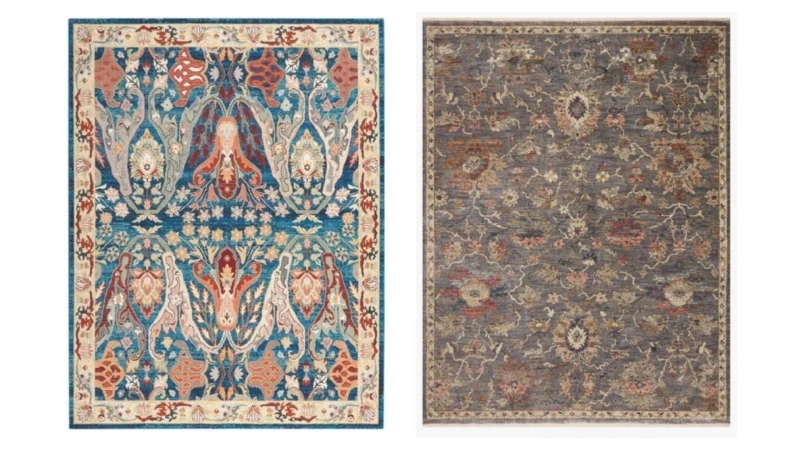Selecting the perfect runner area rug for your home involves careful consideration of size, style, and material to ensure it complements your space and meets your functional needs. Here's a comprehensive guide to assist you in making an informed decision.
Understanding Runner Area Rugs
Runner area rugs are long, narrow rugs designed to fit in tight or high-traffic spaces such as hallways, kitchens, entryways, and alongside beds. They add warmth, color, and texture to these areas while protecting flooring and reducing noise.
Determining the Right Size
Choosing the appropriate size for your runner rug is crucial for both aesthetics and functionality.
- Measure Your Space: Begin by measuring the length and width of the area where you plan to place the runner. This ensures the rug fits appropriately without overwhelming the space or appearing too small.
- Standard Sizes: Runner rugs typically measure between 2 to 3 feet in width and 7 to 14 feet in length. Common sizes include 2.5'x7', 2.5'x10', and 2.5'x12'. Selecting a size that leaves a few inches of flooring visible on all sides creates a balanced look.
- Consider Furniture Placement: If placing the runner near furniture, ensure that either all the furniture legs are off the rug or just the front legs are on it. This maintains visual harmony and prevents uneven wear.
Selecting the Appropriate Style
The style of your runner rug should reflect your personal taste and complement your home's décor.
- Pattern Choices: Runner rugs come in various patterns, including geometric shapes, stripes, floral motifs, and solid colors. Choose a pattern that resonates with your style and the existing décor of the space.
- Color Coordination: Select colors that either harmonize with your current color scheme or provide a contrasting pop to enliven the area. For instance, a vibrant runner can add interest to a neutral hallway, while a subdued design can balance a colorful room.
- Style Consistency: Ensure the rug's design aligns with the overall style of your home, whether it's modern, traditional, bohemian, or coastal. This creates a cohesive and intentional look throughout your space.
Choosing the Right Material
The material of your runner rug affects its durability, feel, and maintenance requirements.
- Wool: Known for its softness and durability, wool is a popular choice for runner rugs. It naturally repels stains and can withstand high traffic, making it suitable for busy areas.
- Cotton: Cotton rugs are generally affordable and easy to clean. They work well in casual settings and are often machine washable, ideal for homes with children or pets.
- Synthetic Fibers: Materials like nylon, polyester, and polypropylene are durable and stain-resistant. They are suitable for high-traffic areas and are often more budget-friendly.
- Natural Fibers: Jute and sisal rugs offer a natural, textured look. However, they may be less comfortable underfoot and can be more challenging to clean, so consider their placement carefully.
Practical Considerations
- Safety: To prevent slipping, especially in high-traffic areas, use a non-slip rug pad underneath your runner. This also adds extra cushioning and extends the rug's lifespan.
- Maintenance: Consider how much maintenance you're willing to undertake. Some materials require regular vacuuming and prompt attention to spills, while others are more forgiving.
- Durability: For areas like hallways and kitchens that experience heavy foot traffic, choose a rug material and construction that can withstand wear and tear.
Enhancing Your Space with Runner Area Rugs
Runner area rugs are versatile additions that can enhance various parts of your home:
- Hallways: A well-chosen runner adds warmth and guides guests through your home, creating a welcoming pathway.
- Kitchens: Placing a runner in the kitchen, especially near the sink or stove, provides comfort underfoot and introduces color or pattern to the space.
- Bedrooms: A runner alongside the bed adds a soft landing spot and can tie together the room's décor.
- Entryways: In entryways, runner rugs make a strong first impression and help protect flooring from dirt and moisture.
Final Thoughts
Selecting the right runner area rug involves balancing size, style, and material to suit your specific needs and preferences. By carefully considering these factors, you can choose a runner that enhances your home's aesthetic appeal and provides comfort and functionality to your space.


